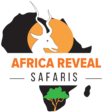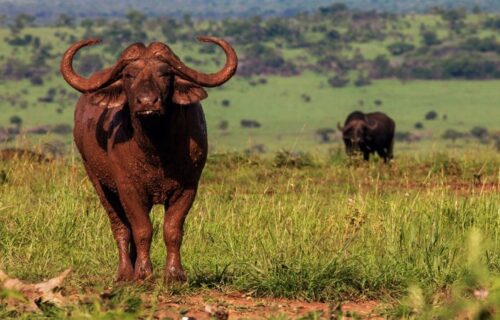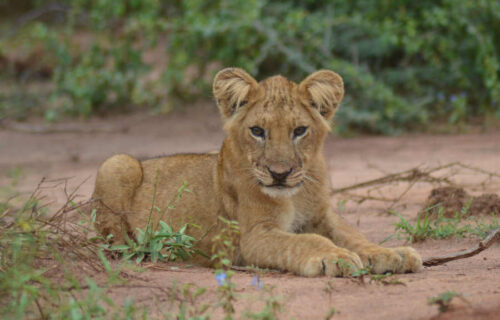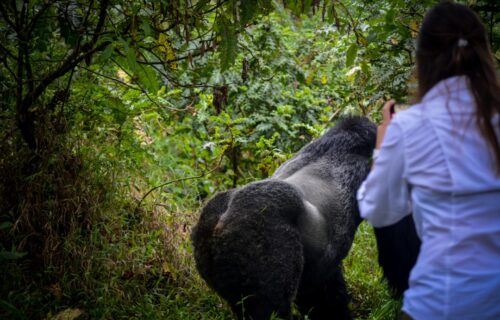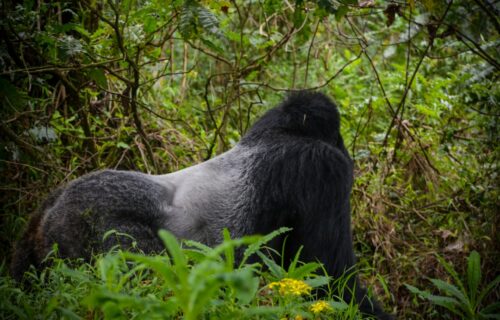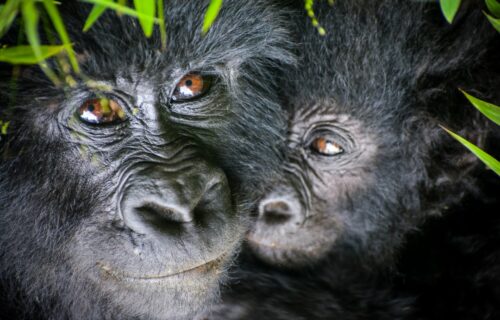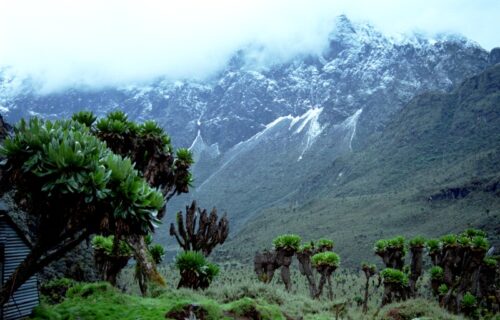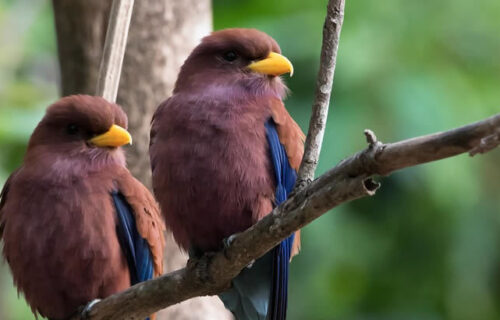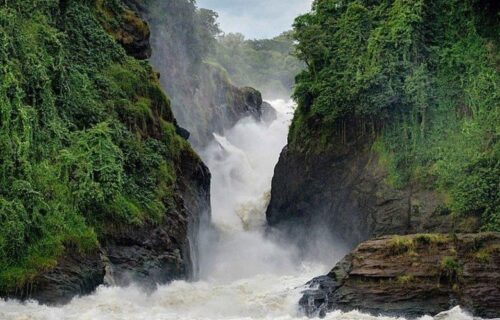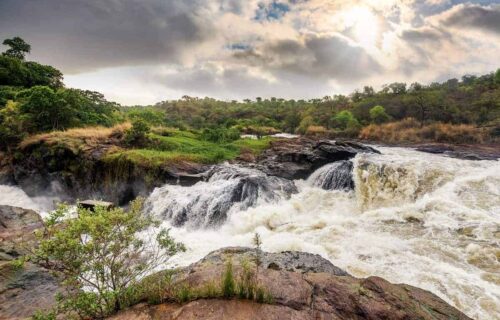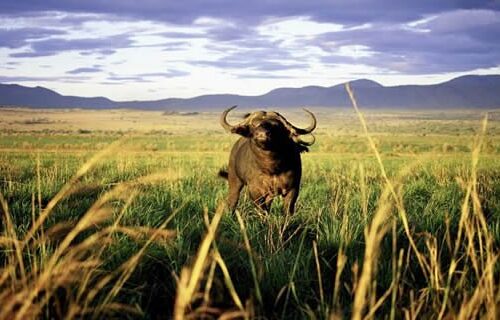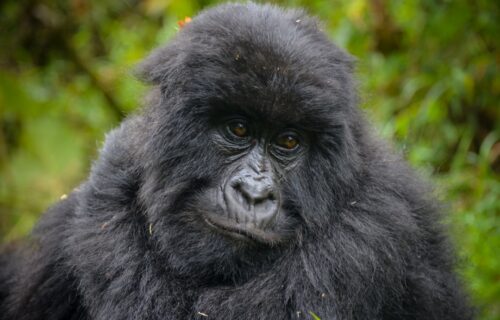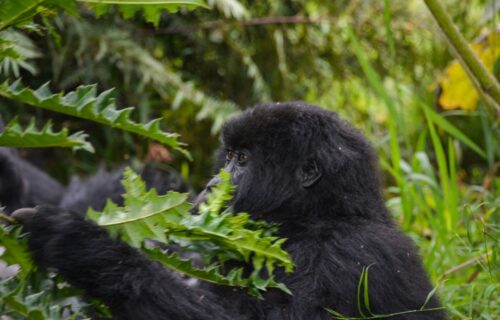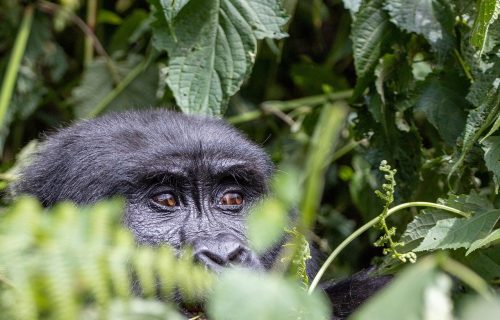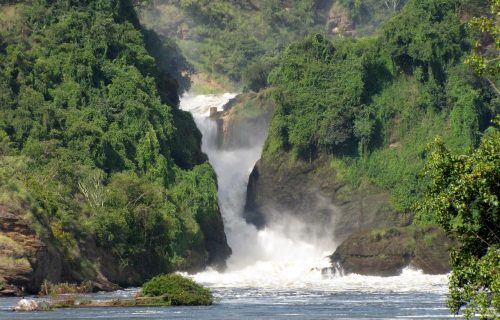Mgahinga Gorilla National Park
Within the Virunga Massif in southwest Uganda, Mgahinga Gorilla National Park is a small sanctuary spanning approximately 33.7 square kilometers. It shares borders with Virunga National Park in the Democratic Republic of the Congo and Rwanda’s Volcanoes National Park. For the endangered mountain gorillas, it is a crucial habitat.
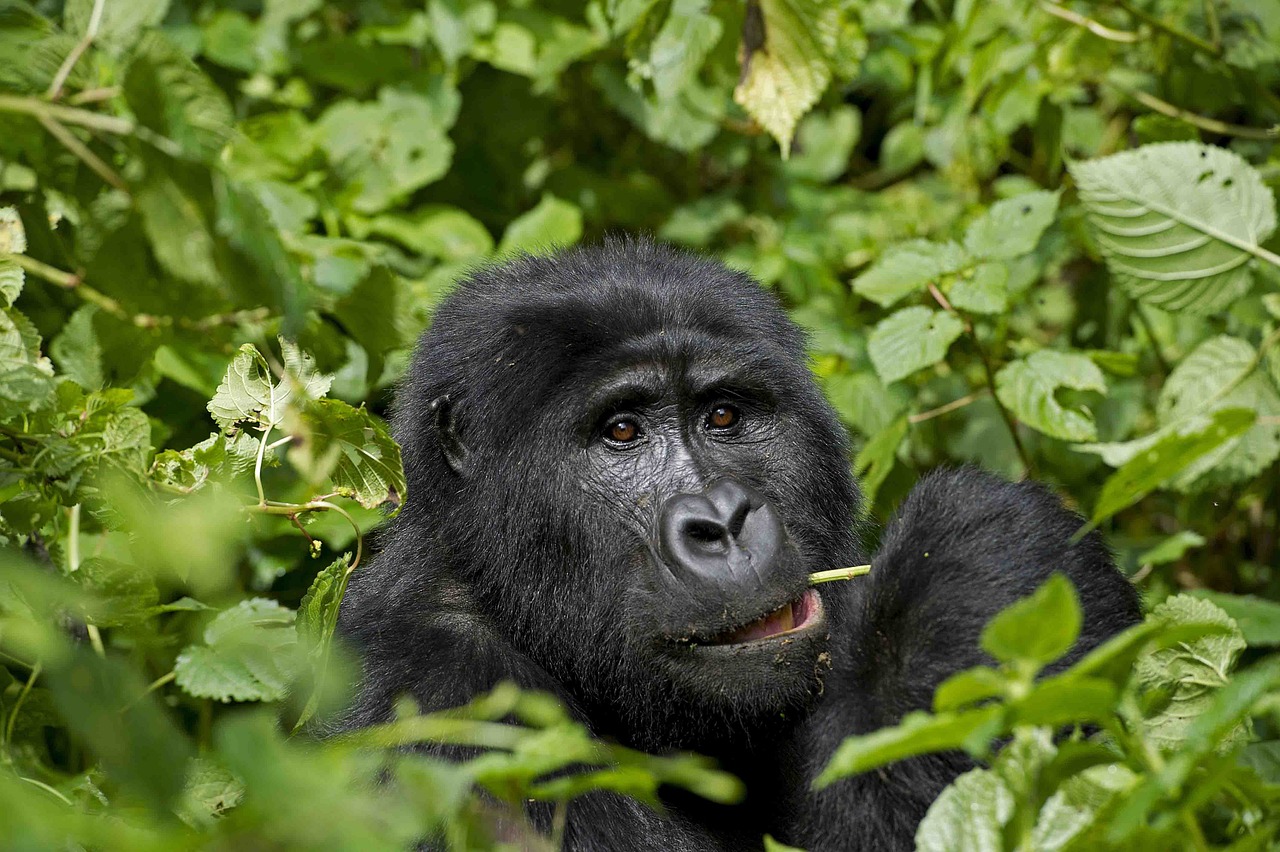
Mgahinga Gorilla National Park
Overview
Uganda’s smallest national park, Mgahinga Gorilla National Park, is a biodiversity hotspot within the Virunga Massif. It is located in the southwest of the country and covers around 33.7 square kilometers. It borders Virunga National Park in the Democratic Republic of the Congo and Rwanda’s Volcanoes National Park. As a component of the Virunga Conservation Area, the Park was created in 1991. Mount Muhavura (4,127 m), Mount Gahinga (3,474 m), and Mount Sabinyo (3,645 m) are three dormant volcanoes that are part of Mgahinga’s famously beautiful volcanic landscapes.
With one habituated gorilla family—the Nyakagezi group—available for trekking and research, Mgahinga is a crucial home for endangered mountain gorillas. It is also home to more than 180 bird species, 76 animal species, and the endangered golden monkey, making it an important location for ecotourism and biodiversity protection.
While there are many activities available to visitors at Mgahinga, gorilla trekking is the most well-liked. Through this encounter, visitors can observe endangered mountain gorillas in their native environment and gain knowledge about their habits and way of life. Bird viewing, hiking the volcanic mountains, golden monkey trekking, and cultural exchanges with the native Batwa people are other activities. In addition to supporting a diverse array of wildlife, the park’s numerous varied ecosystems offer stunning scenery that appeals to both nature lovers and thrill seekers.
Geography and Climate of Mgahinga Gorilla National Park
Steep slopes, verdant montane forests, and bamboo flora characterise the afro-montane environment of Mgahinga, which offers a rich habitat for a variety of wildlife species, including the endangered golden monkeys and mountain gorillas. differing biological zones are created by the differing elevations, which sustain a variety of plants and animals. Unique plant species that flourish in the lower temperatures above 3,000 meters can be found at higher elevations, including lobelias and enormous senecios.
The climate in Mgahinga is tropical rainforest, with daytime highs often between 15°C and 25°C (59°F and 77°F). Temperatures can dip to between 9°C and 15°C (48°F and 59°F) during night. The Park is among the coldest places in Uganda because of its high elevation. Depending on the location and altitudinal zonation, the park’s microclimates might change.
The Park has a climate with two rainy seasons (February to May and September to December), and its elevation spans from 2,227 m to 4,127 m. June through August and December through February are often the driest months, which makes them perfect for outdoor pursuits like hiking volcanoes and gorilla trekking. Regardless of the season, visitors should be ready for rainy circumstances because rain might fall at any time.
Biodiversity
A hub for biodiversity, Mgahinga Gorilla National Park is home to a diverse range of wildlife, including both well-known primates and other mammal species. The endangered mountain gorillas and golden monkeys are two of its most famous residents. Mgahinga is home to 76 mammal species, including forest elephants, buffaloes, bushbucks, and several antelope species, in addition to these primates.
The Park is a popular spot for bird watchers because of its diverse ecosystems, which provide as habitat for more than 180 different species of birds.
Reptiles and amphibians are among the other creatures that flourish in the park’s diverse environments, which range from alpine vegetation to montane forests. This amazing variety adds to Mgahinga’s ecological value. It also strengthens its position as a top ecotourism and wildlife destination.
The Nyakagezi family, the only habituated gorilla group in Mgahinga, is especially well-known for its members’ extraordinary tolerance in permitting several male silverbacks to live together.
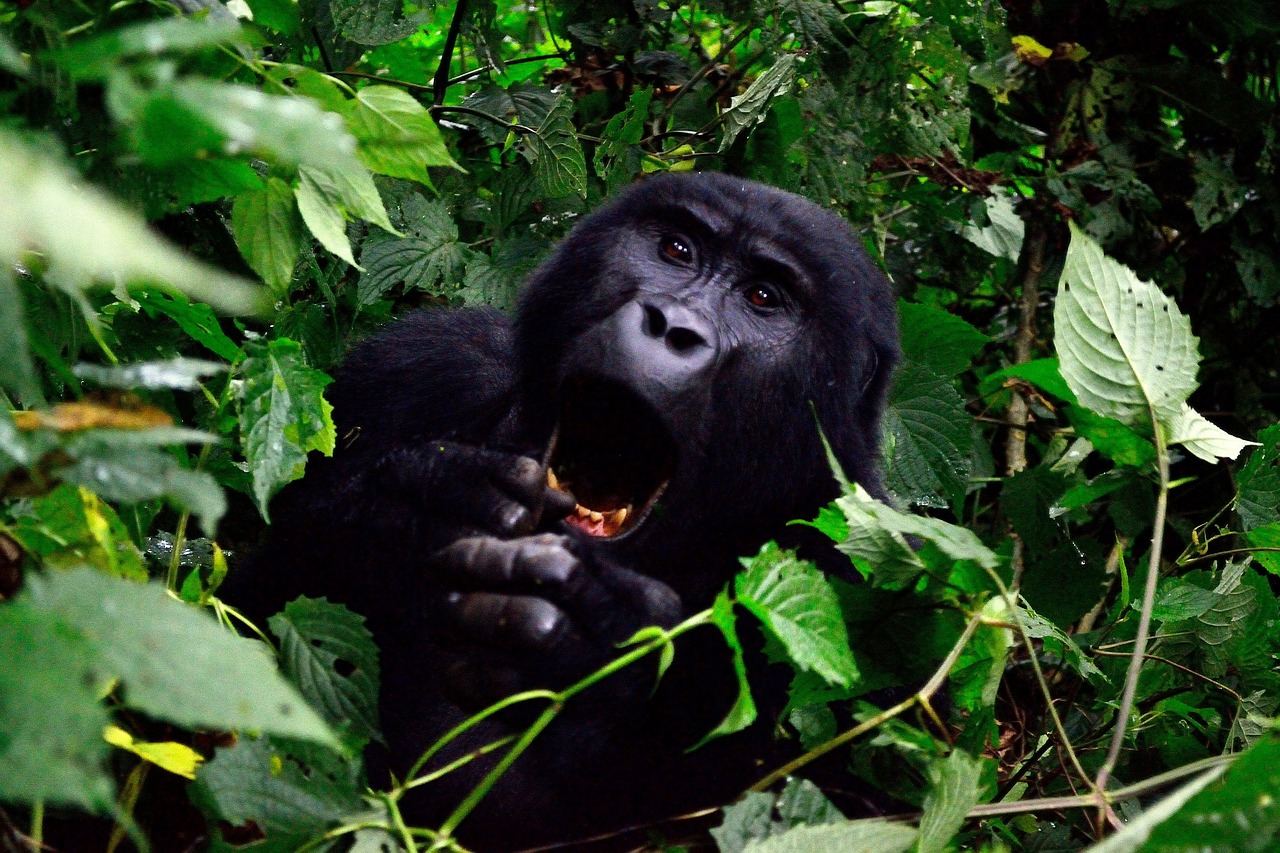
Mgahinga Gorilla National Park
Mountain Gorillas in Mgahinga Gorilla National Park
A little but crucial percentage of this endangered species is protected by Mgahinga Gorilla National Park, one of just three sanctuaries that are home to the last mountain gorillas in the world. Only a small portion of the estimated 1,060 mountain gorillas that remain in the wild—the Nyakagezi group—are habituated in the park.
The unique features of the Nyakagezi group, such as its comparatively small population and flexible social structure—both of which are probably adaptations to social dynamics and resource availability—have been clarified by scientific investigation. Visitors have a rare chance to see these primates in their natural environment because this group is the only focus of gorilla trekking operations in Mgahinga.
There are currently nine members of the Nyakagezi group: two adult females, one adolescent, two newborns, and four silverbacks. Mark, the family’s dominating silverback, succeeded Bugingo, the oldest silverback, who is thought to be older than 54.
The silverbacks of the Nyakagezi family are especially remarkable for their extraordinary tolerance, which permits several males to live together in the group. They also display intricate social relationships and mountain gorilla-like behaviours.
However, there are several obstacles in the way of these gorillas’ survival, such as habitat loss from poaching and encroachment, as well as the possibility of human-transmitted diseases. To lessen these risks, conservation initiatives led by the Uganda Wildlife Authority and backed by groups like the Dian Fossey Gorilla Fund use tactics including anti-poaching patrols, community involvement initiatives, and cross-border cooperation.
An essential part of Mgahinga’s conservation efforts is gorilla tourism. The money made from well-run trekking excursions supports local community development as well as park management. Strict rules and restrictions, such as keeping a safe distance during interactions and following medical procedures to stop the spread of sickness, are in place to lessen the negative effects of tourism on gorillas.
Gorilla trekking in Mgahinga is a genuinely unique and fulfilling experience because of its intimate nature and conservation-related benefits. It provides an opportunity to interact with one of our closest relatives in the wild, which deepens our understanding of the value of protecting the environment for coming generations.
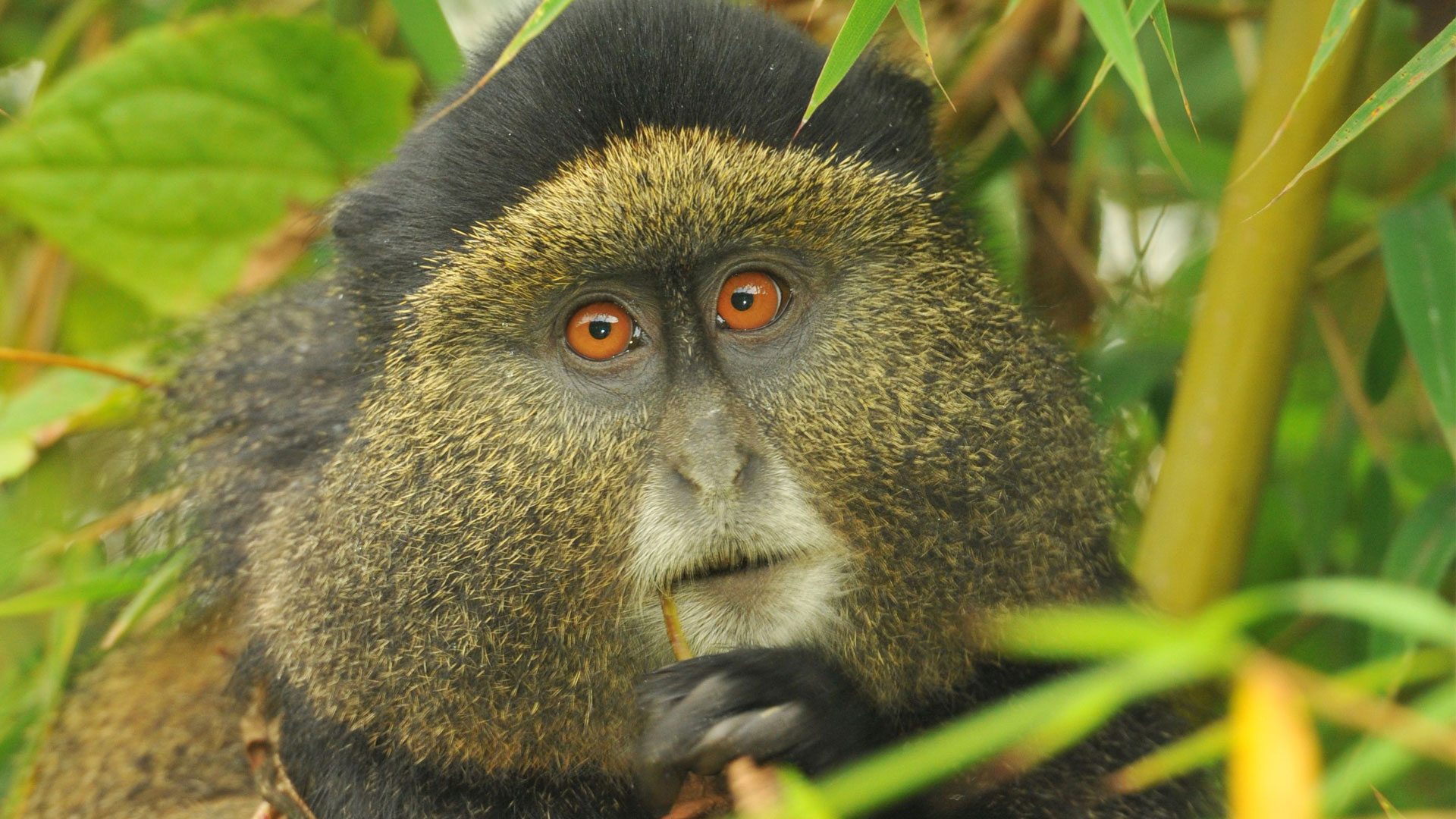
Golden monkey trekking
Golden Monkeys in Mgahinga Gorilla National Park
The golden monkey (cercopithecus mitis kandti) is another fascinating primate species found in Mgahinga Gorilla National Park, which is well-known for its mountain gorillas. Due to their stunning golden-orange fur and amusing antics, these endangered bamboo specialists bring a unique depth to the park’s biodiversity. Golden monkeys face their own conservation issues, which makes their presence at Mgahinga even more valuable, even though they are not as endangered as their gorilla cousins.
There are an estimated 3,000 to 4,000 golden monkeys in Mgahinga, most of whom live in the bamboo forests of the park. There is one habituated group of golden monkeys in the park, with an estimated 60–80 individuals. Visitors may get a close-up look at this troop because they are used to human presence.
With multiple subgroups within the troop and a hierarchy headed by a dominant male, the social structure of golden monkeys is intricate. Because they mostly eat bamboo shoots, fruits, and insects, the Mgahinga bamboo woods provide them with the perfect ecological niche.
In recent years, golden monkey trekking has become more and more popular as a distinctive and easier substitute for gorilla trekking. The money made from this activity supports local livelihoods and primate conservation initiatives.
Other Wildlife in Mgahinga
Mgahinga Gorilla National Park is home to 76 mammal species, including Forest Elephants, Cape Buffalo, Bushbucks and Duikers, Giant Forest Hogs, Black-and-white Colobus Monkeys, Leopards, and Golden Cats, in addition to the well-known mountain gorillas and golden monkeys. Rodents, bats, and other small carnivores are among the smaller creatures that can be found in the park.
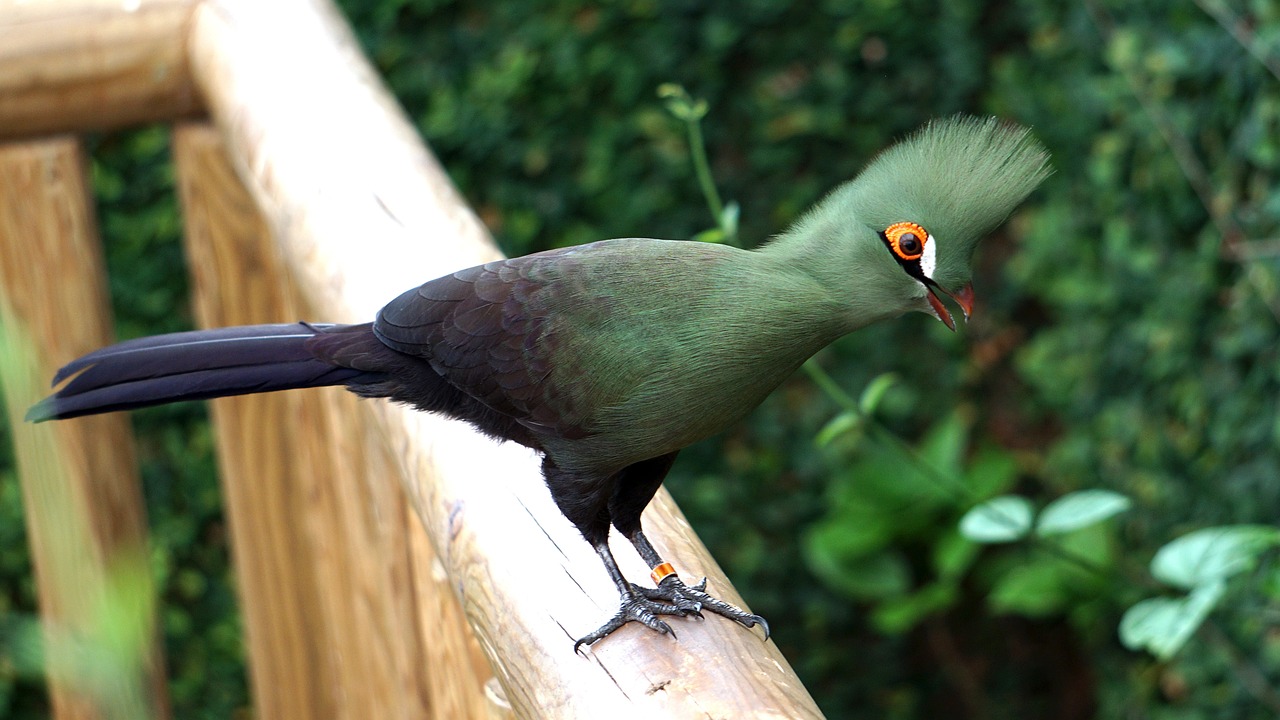
Mgahinga Gorilla National Park
Birds in Mgahinga in Mgahinga Gorilla National Park
With almost 180 bird species identified, Mgahinga Gorilla National Park is a top location for birdwatchers because to its remarkable avian variety. There are twelve species in the park that are indigenous to the Albertine Rift, a hotspot for biodiversity. The Rwenzori Turaco, Kivu Ground Thrush, Cinnamon Bracken Warbler, White-starred Robin, Rwenzori Batis, Archer’s Robin Chat, and Olive Pigeon are a few of the most common bird species in Mgahinga.
Other noteworthy species include the Greater Double-collared Sunbird, the Scarlet-tufted Malachite Sunbird, the Western Green Tinkerbird, and the Black-headed Waxbill.
Trails like the gorge trail between Mount Gahinga and Mount Sabinyo offer outstanding observation places, and the park’s diverse montane ecosystems make for great birdwatching possibilities. The great biodiversity of this ornithological hotspot is enhanced by the variety of migratory and forest birds that birdwatchers can anticipate seeing.
In addition to gorilla trekking, adventure seekers in Uganda frequently choose Mgahinga National Park as their destination. Mount Gahinga, Mount Muhavura, and Mount Sabinyo are its three main peaks, and it provides volcano climbing on all three.
Activities in Mgahinga National Park
Gorilla Trekking
The most well-liked activity in Mgahinga is gorilla trekking, which blends adventure, animal observation, and environmental consciousness. The Nyakagezi Gorilla Family is the only habituated group in the park that is accessible for this excursion. The family’s complex social ties can be observed for an hour by the eight tourists who can walk it each day. A closer and more engaging experience with Africa’s great apes in their native environment is made possible by the comparatively small group size.
Experienced guides who are well-versed on the gorillas and their habitat lead treks, guaranteeing tourists a fun and educational experience. Depending on the gorillas’ location, trekkers usually start their adventure early in the morning with a briefing at the park headquarters. The hike might last anywhere from two to six hours. The landscape of Mgahinga, which consists of steep slopes and dense foliage, can make the walk difficult. After locating these amazing animals, tourists are permitted to observe them for an hour while taking natural photos of their interactions and behaviours.
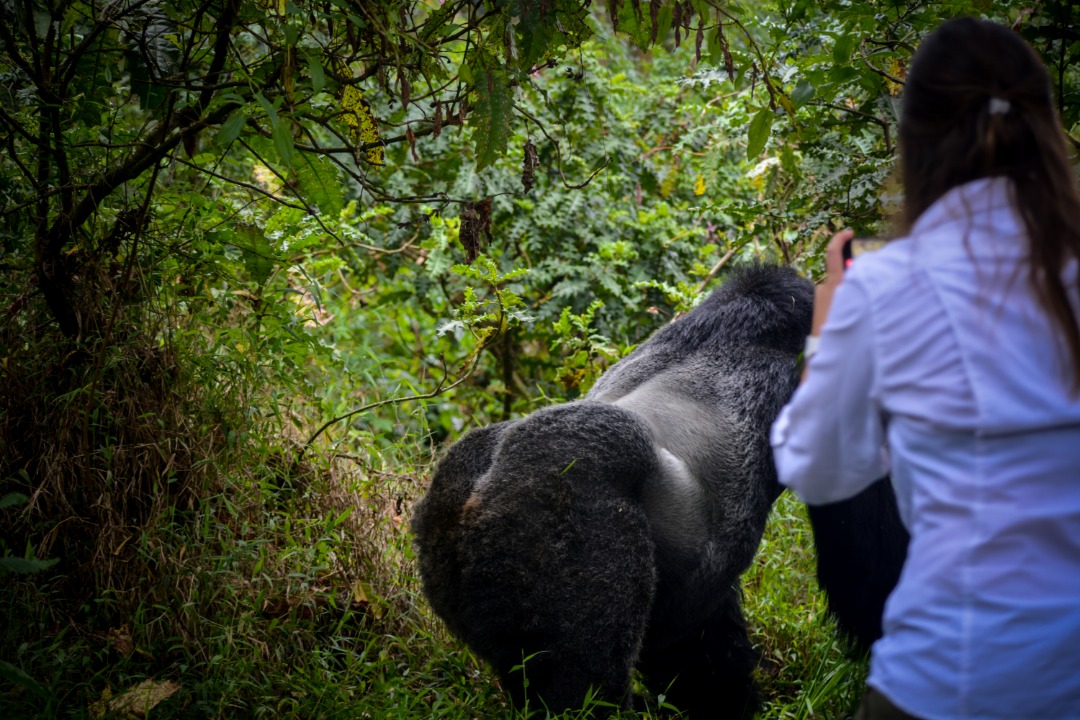
Gorilla Trekking Safari
How to Go for a Gorilla Trek
To go gorilla trekking in Mgahinga, visitors need to get a trekking permit. For foreign non-residents, the cost of a permit is $800; for foreign residents, it is $700; for African citizens, it is $500; and for East African citizens, it is UGX 350,000. Reputable tour companies can arrange for permits for you; they will buy them from the Uganda Wildlife Authority. To preserve Africa’s endangered gorillas and their conservation status, the money collected from trekking permits supports park management, anti-poaching patrols, community development programs, and research projects.
Make reservations for Mgahinga permits well in advance, particularly during periods of high demand. Trekkers should be at the trailhead by 7:00 a.m. on the day of the walk, carrying the essentials such as water, snacks, and clothing suitable for hiking in a jungle.
Best Time to Go for A Gorilla Trek
The dry seasons (June to August and December to February) are the ideal times to undertake gorilla trekking in Mgahinga. Because there is less rainfall during these months, routes are easier to reach and the hiking experience is improved.
Heavy rains during the rainy seasons (March to May and September to November) can make the trails muddy and slick, but they also provide cheaper permits and fewer visitors.
Are you prepared to embark on a once-in-a-lifetime outdoor adventure? Plan your incredible African adventure into the foggy mountain jungles of Mgahinga Gorilla National Park by reserving your gorilla permit with Africa Reveal Safaris right now! Look through our selection of customised gorilla trekking packages in Uganda.
Golden Monkey Trekking in Mgahinga Gorilla National Park
Gorilla trekking in Mgahinga is a wonderful complement to golden monkey trekking. Before starting their journey, guests must attend a required briefing at the park headquarters to learn about the regulations and expectations of trekking.
Finding the golden monkeys can take anywhere from 30 to 3 hours, depending on how they move through the thick bamboo trees, and the walk often begins at 8:00 AM. Once located, tourists are only permitted to spend an hour with the monkeys, taking pictures and observing them as they frolic among the trees and eat bamboo shoots, fruits, and flowers. Compared to gorilla trekking, golden monkey trekking is comparatively easy, taking around three to four hours on average.
Golden Monkey Tracking
Costs and Permits: In order to hike Golden Monkeys in Mgahinga, visitors must obtain a permit, which costs UGX 40,000 for East African nationals, $60 for foreign non-residents, and $50 for foreign residents. Permits are available through respectable tour companies like Africa Reveal Safaris or at the park’s main office.
Best Time to Go: Although golden monkey trekking in Mgahinga is possible all year round, the dry seasons of June through September and December through February are the ideal times to go. Trails are less muddy during these months, which facilitates hiking and improves visibility for seeing wildlife.
Mgahinga also provides a golden monkey habituation procedure, which enables guests to spend up to four hours with researchers learning about the routines and behaviours of the monkeys, for those seeking a more immersive experience. For foreign tourists, this experience requires an additional permission that costs $100.
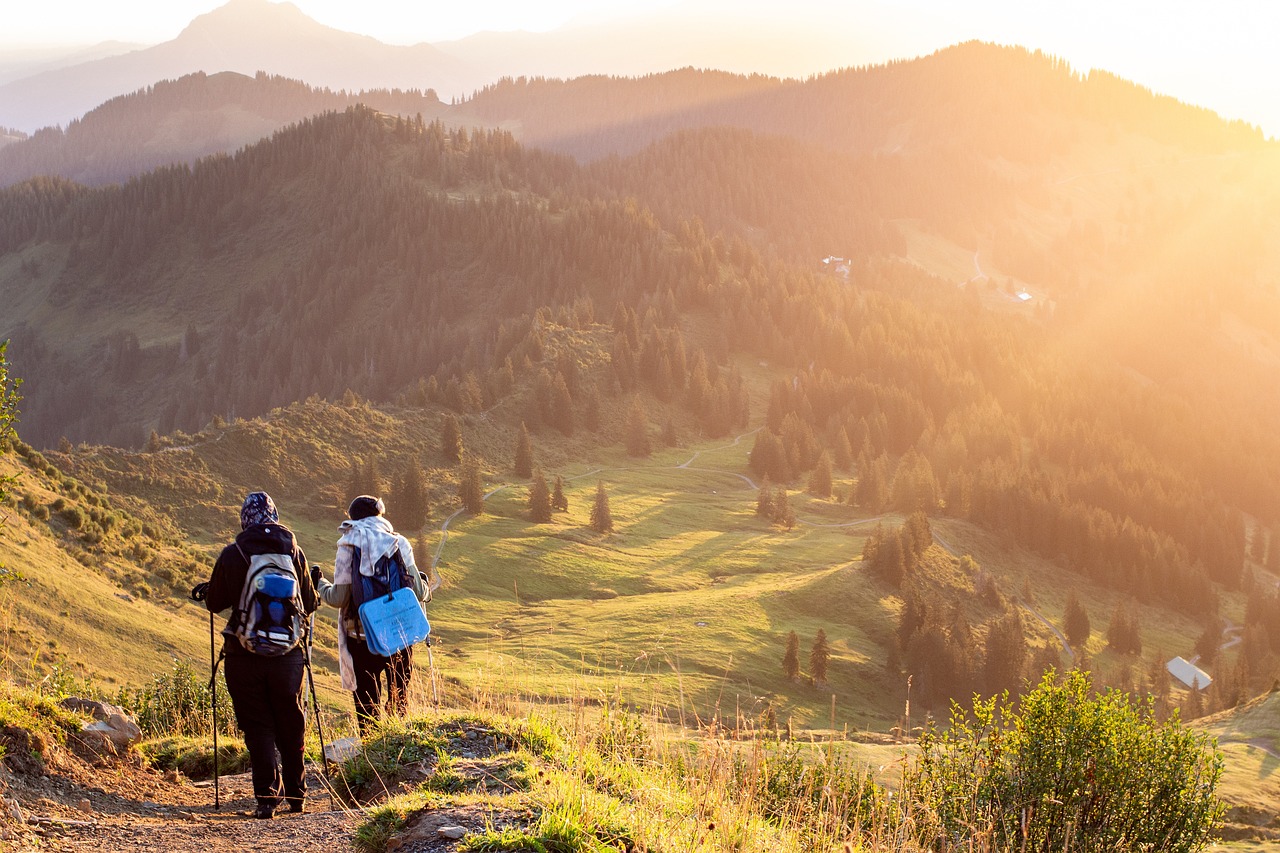
Volcano Hiking
Volcano Hiking in Mgahinga Gorilla National Park
In Uganda, adventure seekers frequently choose to visit Mgahinga National Park. Mount Gahinga, Mount Muhavura, and Mount Sabinyo are its three main peaks, and it provides volcano climbing on all three. Hiking these inactive volcanoes offers a variety of experiences, with stunning scenery, rare species, and abundant vegetation.
Mount Gahinga:
3,474 meters (11,398 ft) in height.
About 6 to 8 hours are needed for the entire trek.
The trail leads up to the peak, which has a marshy caldera, after winding through bamboo trees from the Ntebeko Park Visitor Centre. Along the journey, hikers may come across golden monkeys and take in views of the surrounding area.
Mount Muhavura:
4,127 meters (13,507 feet) in height.
Trekking Time: Approximately 8 to 10 hours total.
The Trail: Because of its elevation, this hike is more difficult. A small crater lake is among the breathtaking vistas that can be seen from the peak of the trail, which winds through a variety of vegetation zones.
Mount Sabinyo:
3,669 meters (12,362 ft) in height.
Hiking The trip takes about eight to ten hours total.
The Trail is renowned for its difficult terrain and offers hikers the opportunity to stand at the peak where three countries—Uganda, Rwanda, and the Democratic Republic of the Congo—intersect. Steep parts and distinctive geological features mark the trail’s terminus.
The Ntebeko Park headquarters serves as the starting point for the volcanic hiking experience, where guests are given instructions on safety precautions and what to anticipate while hiking. Experienced Park rangers and guides usually accompany trekkers, offering security and information about the surrounding wildlife and plants.
Cultural Experiences in Mgahinga Gorilla National Park
The Batwa people, an indigenous group renowned for their close ties to the forest, are at the centre of cultural activities in Mgahinga Gorilla National Park.
Known as “the keepers of the forest,” the Batwa pygmies coexisted peacefully with the forest for millennia, depending on its resources to survive. However, they were uprooted from their ancestral grounds when the park was established in 1991, which resulted in serious social and economic problems. They now reside on the borders of the park and provide tourists with cultural experiences that highlight their history, traditional ways of life, and struggles.
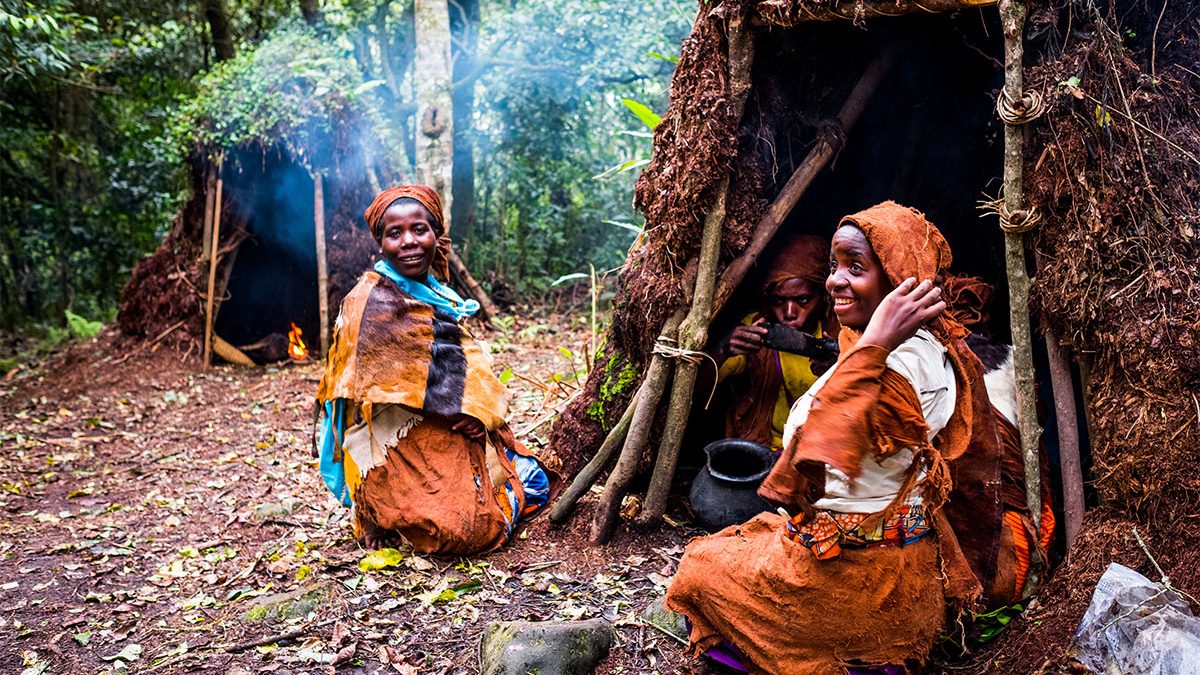
Batwa Experience
Batwa Cultural Trail
One important cultural experience that lets tourists fully immerse themselves in the Batwa way of life is the Batwa Cultural Trail. Through this route, visitors can discover the long-standing customs of this underprivileged group, acting as a living museum.
Under the guidance of knowledgeable Batwa guides, guests discover how to collect food from the jungle, use herbal remedies, and hunt using traditional methods. Historical places like the Garama Cave, where the Batwa ruler once resided, are visited along the walk. It highlights customs such as creating fire and producing bamboo utensils. In addition to encouraging community-led tourism and sustaining the lives of the Batwa people, the Batwa Cultural Trail offers a singular opportunity to learn about their indigenous knowledge and cultural legacy.
Places to stay in Mgahinga Gorilla National Park
There are a few places to stay close to Mgahinga Gorilla National Park. The majority of hotels in Kisoro, the closest city, are 13 km from the park entrance. Here are several possibilities:
Amajambere Iwacu Community Camp (shoestring budget)
Travelers Rest Hotel and the Kisoro Tourist Hotel (budget).
Nkuringo Bwindi Gorilla Lodge (mid-range/luxury)
Volcanoes Mount Gahinga Lodge (luxury)
Mutanda Lake Resort & Chameleon Hill (mid-range)
Bunyonyi Birdnest Lodge (mid-range)
Whichever lodging choice you select, make sure your lodge or guesthouse has easy access to the park since, if you signed up for the gorilla trekking adventure, you must arrive at the Ntebeko trekking centre by 7:30 am. Fortunately, the majority of lodgings provide transportation to and from the park as well as guided tours. To guarantee availability, reserve your lodging in advance, particularly during busy times.
How To Reach Mgahinga Gorilla National Park
Mgahinga is accessible by air or road using private or rented transportation. Entebbe (10–11 hours away) and Kigali, Rwanda (4 hours away) are the closest international airports.
By Road
From Kampala or Entebbe: The most popular route leads straight to the park headquarters at Ntebeko, passing through Masaka, Mbarara, Kabale, and Kisoro.
Duration: By automobile, this trip usually takes nine to ten hours. Along the route, visitors can take in picturesque views of the terraced farmlands, local markets, and the Kigezi hills.
Self-Drive or Guided trip: Travellers have the option of scheduling a guided trip with a respectable safari company or driving themselves. Self-driving technology is flexible, but it needs a dependable car—ideally one with four wheels.
Public Transportation: Although bus companies like Post Bus and Horizon Bus offer public transportation from Kampala to Kisoro, it is not advised because of the possibility of delays and discomfort. Since public transport does not run within the park, visitors must book a taxi once they arrive in Kisoro in order to get to the park headquarters.
From Kigali, Rwanda: Visitors arriving from Kigali can fly into Kigali International Airport and then drive over the Cyanika border to reach the headquarters of Ntebeko Park. This journey takes roughly three to four hours. Because it takes less time to get there than driving from Kampala, this alternative is frequently used. However, it includes crossing borders.
By Air
Domestic Flights: Aerolink Uganda conducts regular flights from Entebbe International Airport or Kajjansi Airfield to Kisoro Airstrip.
Timetable of Flights: Normally, flights leave Entebbe at 7:00 AM and reach Kisoro at 8:10 AM. Return flights leave Kisoro at 8:25 AM and return to Entebbe at 11:25 AM.
Airport Transfers: Upon arrival, visitors can make arrangements with their reserved resort or safari company for road transportation to the park headquarters.
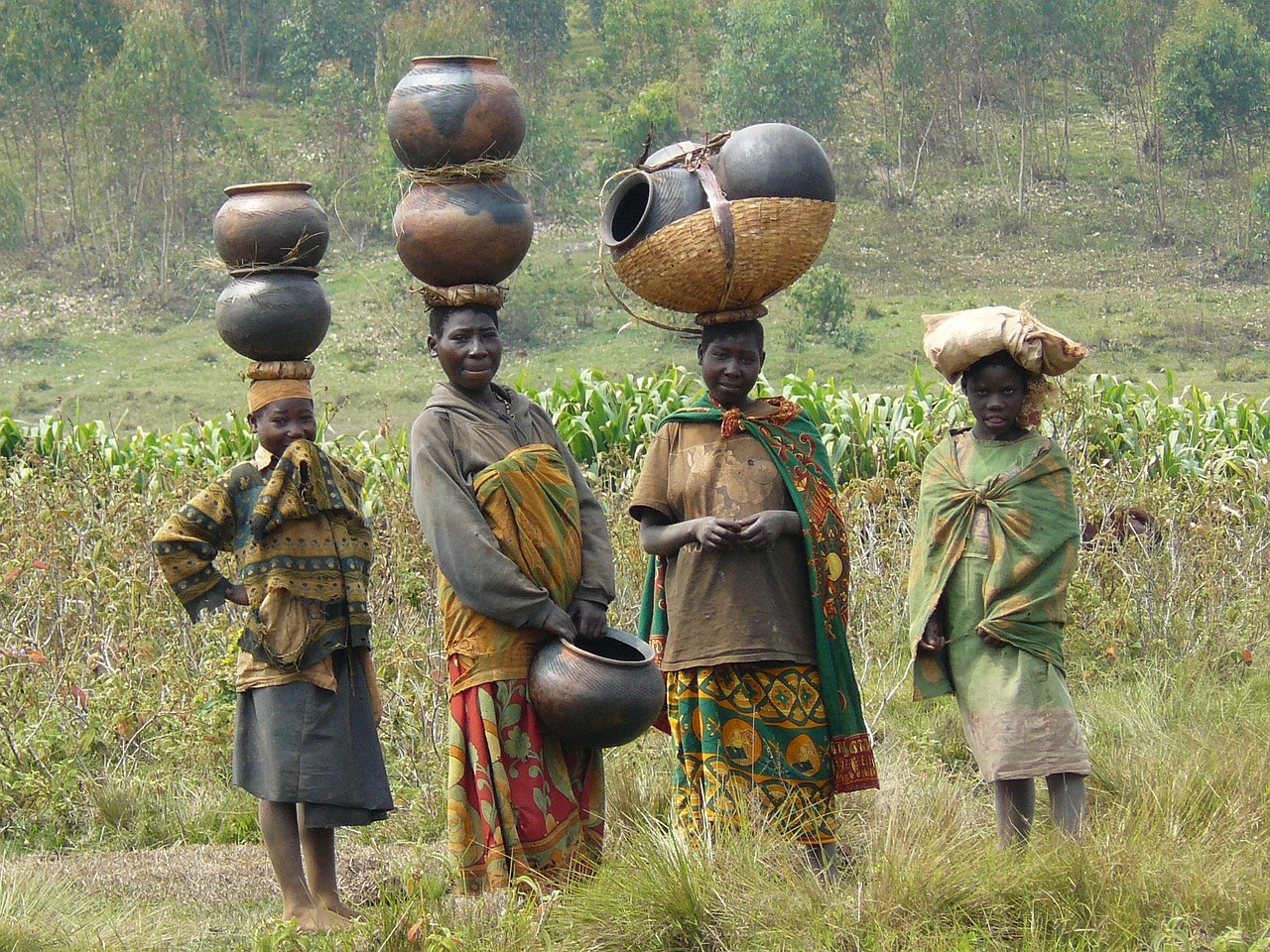
Mgahinga Gorilla National Park
Mgahinga Gorilla Trekking Tours with Africa Reveal Safaris
The wonders of Mgahinga Gorilla National Park are just waiting to be discovered. However, it can be difficult to navigate its difficult terrain and obtain those sought-after gorilla permits. Africa Reveal Safaris may help with that. Our specialty is creating smooth, remarkable travel experiences to Mgahinga and beyond, making sure you take in everything that this amazing area has to offer. On the same Uganda safari tour, extend your journey to Kibale National Park or Bwindi Impenetrable National Park to see the untamed chimpanzees.
All adventure levels can be satisfied by our professionally led tours, which include thrilling volcanic climbs, heart-pounding gorilla treks, and captivating golden monkey encounters. We take care of everything so you can concentrate on making treasured memories.
Are you prepared to begin organising your ideal trip in Africa? Let Africa Reveal Safaris serve as your guide through the Mgahinga forest by taking a look at our Gorilla Trekking Tours today.
[/vc_column_text][/vc_column][/vc_row]
Best Tour Safari Packages in Mgahinga Gorilla National Park Uganda
20 Days Uganda Safari
Our 20 Days Uganda Safari brings you the best of Uganda: where the savannah meets the rainforest. Expect to see the animals of the savannahs (lion, elephant, buffalo, giraffe, hippo, and leopard) and up to 16 primate species, including gorillas and chimps. Learn More
22 Days Uganda Birding Safari
22 Days Uganda Birding Safari brings you the best of the birdlife in Uganda. 22 Days Uganda Birding Safari Uganda has a variety of landscapes and over 1000 bird species! This 22 Days Uganda Birding Safari brings you to the most important birding sites in Uganda. Learn More
Uganda Safaris and Packages
[/vc_column_text]
15 Days Uganda Safari Tour specifically includes the most important and well known national parks of Uganda: Murchison Falls National Park, Kibale Forest National Park, Queen Elizabeth National Park, Bwindi National Park, Lake Mutanda. Read More
10 Days Ugandan Tour brings you the highlights of Western Uganda: where the savannah meets the rainforest. Expect to see the animals of the savannahs (lion, elephant, buffalo, giraffe, hippo, leopard) and up to 15 primate species, including gorillas and chimps. Read More
Our 4 Days Uganda Gorilla Safari brings you the highlight of Uganda: Tracking the Mountain Gorillas! Spend one hour with our very close relatives in Bwindi Impenetrable National Park. Read More
22 Days Uganda Birding Safari brings you to the most important birding sites in Uganda. Habitats to be seen: Forest, Lowland jungle, Swamps, Canals and Lakes, Mountains and Savannahs. Read More
3 Days Murchison Uganda Safari is to give the best experience to our travelers who have limited days in the country. Murchison Falls Uganda Murchison Falls Uganda. Read More
7 Days Uganda Safari combines two national parks in Uganda giving you a variety of wildlife to explore. Kidepo Valley National Park gives the best scenic views around the Narus valley. Read More
4 Days Kidepo Valley National Park Safari brings you the magical experience and adventure of sighting “the big 4 of the five” animals. Read More
3 Days Flying Gorilla Trekking Safari – Bwindi Impenetrable National Park. The Bwindi impenetrable national park is well known as the home to mountain climbing Gorillas. Read More
6 Days Gorillas Express Safari-Unforgettable 6-day journey through Uganda’s breathtaking landscapes and diverse wildlife. Track majestic mountain gorillas in Bwindi Impenetrable National Park, explore Queen Elizabeth National Park’s scenic beauty, including tree-climbing lions, elephants, and buffalo.. Read More
